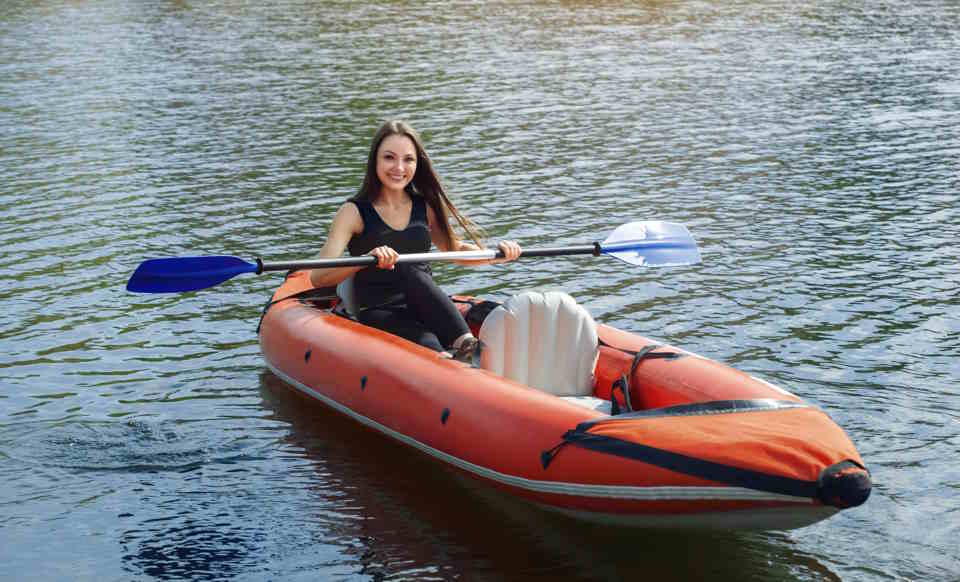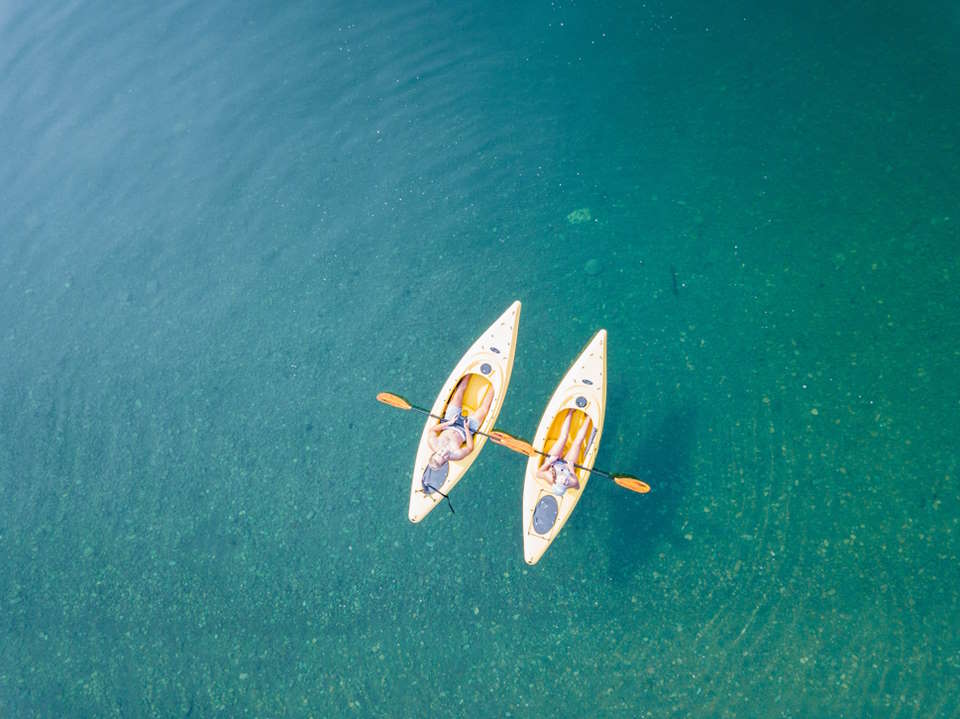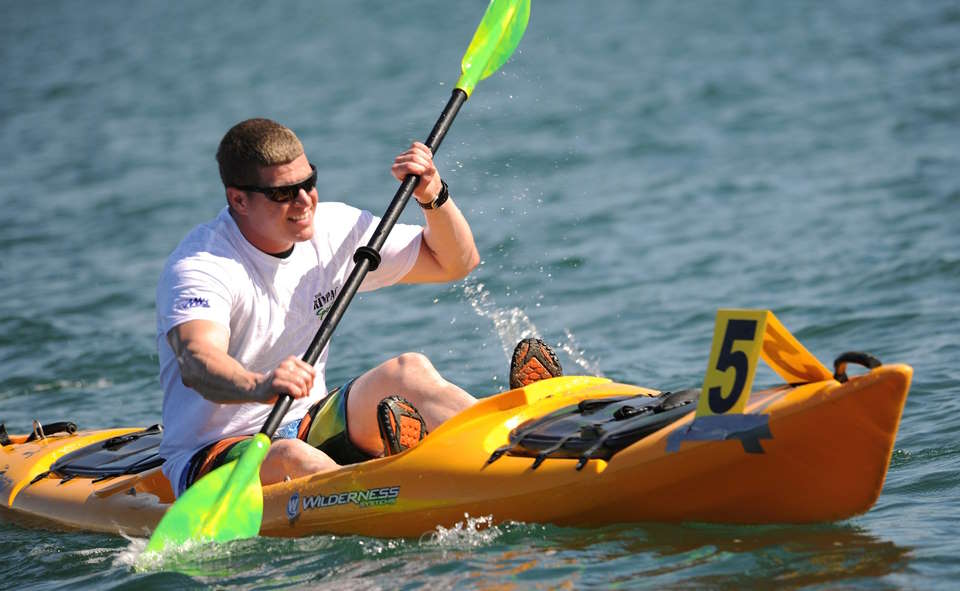Kayaking is a thrilling outdoor activity that offers a unique blend of physical exercise and stunning natural landscapes. However, to truly enjoy your time on the water and ensure safety, it is essential to master the art of proper kayaking strokes. We will explore the importance of proper kayaking strokes and provide step-by-step guides to mastering various techniques. From perfecting the forward and reverse paddle strokes to navigating with the draw stroke and efficiently turning using the sweep stroke, this comprehensive guide will equip you with the skills necessary to enhance your kayaking experience.
The Importance Of Proper Kayaking Strokes
Have you ever tried kayaking? If not, you’re missing out on one exhilarating experience! Kayaking is not only a fun and adventurous activity but also a great way to relax and appreciate nature. However, to fully enjoy this water sport, it is crucial to understand the importance of proper kayaking strokes. Mastering the different paddle strokes will not only help you control the direction and speed of your kayak but also ensure your safety on the water.
One of the most essential kayaking strokes to learn is the forward paddle stroke. This stroke is used to propel your kayak forward and maintain a steady pace. To execute the forward paddle stroke correctly, sit upright in your kayak with your knees slightly bent and feet placed comfortably on the footrests. Grip the paddle with your hands shoulder-width apart and extend your arms in front of you. As you dip the paddle blade into the water, rotate your torso and use the strength of your core muscles to pull the paddle blade towards your hip. Keep repeating this motion on both sides of the kayak, alternating the paddle blade in the water, and you’ll be gliding smoothly through the water in no time.
In contrast to the forward paddle stroke, the reverse paddle stroke is used to slow down or stop your kayak. When faced with obstacles or when you need to make a quick stop, the reverse paddle stroke becomes your ally. To perform the reverse paddle stroke, initiate the same forward motion as the forward paddle stroke, but instead of pulling the paddle blade towards your hip, push it away from your hip. This action will create resistance and slow down or stop your kayak. Remember to be aware of your surroundings and give yourself enough time and space to execute the reverse paddle stroke properly.
| List of Proper Kayaking Strokes |
|---|
| Forward Paddle Stroke |
| Reverse Paddle Stroke |
Mastering The Forward Paddle Stroke
Are you ready to take your kayaking skills to the next level? One essential technique every kayaker should master is the forward paddle stroke. As straightforward as it may seem, there is actually more to it than meets the eye. We will delve into the art of mastering the forward paddle stroke and explore some tips and tricks to help you improve your technique and efficiency on the water.
Before we dive in, let’s understand why mastering the forward paddle stroke is so important. The forward stroke is the foundation of kayaking, the bread and butter of propulsion. It is the key to propelling your kayak forward smoothly and efficiently, allowing you to cover greater distances with less effort. So, let’s not waste any more time and start unlocking the secrets of the forward paddle stroke!
One crucial aspect to remember when executing the forward paddle stroke is to maintain a good posture. Sit up straight, engage your core muscles, and relax your shoulders. This will not only help you exert more power but also protect your back from unnecessary strain. Remember, kayaking is all about using your whole body, not just your arms!
- Position your hands correctly on the paddle. Hold the paddle with a firm grip, making sure your hands are shoulder-width apart. This will offer better control and stability as you slice through the water.
- Start the stroke by extending your top hand forward, reaching as far as you comfortably can. This will ensure you make the most of each stroke, maximizing your forward momentum.
- Once your top hand is fully extended, twist your torso and engage your core muscles, initiating the power phase of the stroke. Use your lower hand to guide the paddle through the water, maintaining a slight angle to optimize efficiency.
| Troubleshooting Tips: | Solution: |
|---|---|
| If you find yourself veering off course or struggling to maintain a straight line, | try focusing on a fixed point in the distance and aim to paddle towards it. This will help you stay on track and improve your overall control. |
| If you feel like you’re not generating enough power or speed, | try engaging your core muscles more and increasing the rotation of your torso. This will help you tap into the full potential of your stroke and propel yourself forward with more force. |
| If you’re experiencing discomfort or strain in your shoulders or back, | check your posture and make sure you’re sitting up straight and using your whole body to paddle. Additionally, take regular breaks to stretch and relax your muscles. |
Perfecting The Reverse Paddle Stroke
Are you tired of always paddling forward in your kayak? Looking to mix things up and add some variety to your paddling techniques? Then it’s time to perfect the reverse paddle stroke! This crucial skill will not only allow you to navigate backward with ease, but also add finesse and control to your kayaking repertoire. So, grab your paddle and let’s dive into the world of reverse paddle strokes!
The reverse paddle stroke, also known as the backstroke, is the key to maneuvering your kayak in tight spaces or when you need to quickly change direction. To execute this stroke, start by positioning yourself comfortably in your kayak with your back straight and your feet resting against the foot pegs or bulkhead. Hold the paddle with both hands, ensuring a shoulder-width grip.
Now that you’re set, dip your right paddle blade into the water behind you while reaching back with your right hand. As you do this, rotate your torso towards the left, guiding the paddle blade through the water in a large arc. Remember to keep your arms straight and use your core muscles to generate power. Your left hand should be positioned at the center of the paddle shaft, providing support and stabilizing your strokes.
- Accuracy: Aim for a clean, straight line in the water to maximize the efficiency of your reverse paddle stroke. Practice by placing a buoy or floating object in front of you and repeatedly paddle backward, hitting the target each time.
- Rhythm: Establish a smooth rhythm by syncing your paddle strokes with your breathing. Inhale as you rotate your torso and prepare for the stroke, and exhale as you powerfully push the water behind you with the paddle. This controlled breathing will help you stay relaxed and maintain a steady pace.
- Timing: Properly timing your reverse paddle strokes is crucial to maintain balance and control. The moment your paddle blade exits the water, quickly rotate your torso back to its original position while simultaneously dipping your left paddle blade into the water. This continuous motion, with precise timing, will allow you to paddle backward effortlessly.
| Common Mistakes to Avoid | Tips for Improvement |
|---|---|
|
|
|
|
|
|
Navigating With The Draw Stroke
Kayaking is a thrilling adventure that allows you to explore the beauty of nature while paddling through serene waters. While there are various techniques and strokes to maneuver the kayak effectively, one of the most important and versatile strokes is the Draw Stroke. This maneuver helps you to navigate your kayak sideways or to control its direction by pulling the water towards you using the paddle.
The Draw Stroke is a fundamental technique that every kayaker should master. It not only enhances your control over the kayak but also allows you to maneuver efficiently in challenging conditions. To perform the Draw Stroke, start by planting your paddle blade vertically in the water next to the kayak. Then, keeping your arms straight, use your upper body and core muscles to pull the paddle towards you while maintaining its vertical position. This action will create a side-to-side force that moves the kayak in the desired direction.
There are several scenarios where the Draw Stroke comes in handy. For instance, imagine you are kayaking along a narrow stream with overhanging branches. To avoid colliding with them, you can utilize the Draw Stroke to move your kayak sideways without compromising your stability. Moreover, if you need to make a quick turn while navigating through a rapid or around obstacles, the Draw Stroke allows you to efficiently change direction without losing control.
- The Draw Stroke is particularly useful when you need to dock your kayak. As you approach the dock, perform the Draw Stroke on the side opposite to the dock. This will bring your kayak parallel to the dock, allowing you to easily access it without any hassle. Remember to perform the Draw Stroke gently, as a sudden or forceful tug might result in a collision or imbalance.
| Benefits of the Draw Stroke: |
|---|
| 1. Versatility: The Draw Stroke is a versatile maneuver that can be used in various situations and conditions, making it an essential skill for any kayaker. |
| 2. Control: Mastering the Draw Stroke provides you with greater control over your kayak, allowing you to navigate effectively and confidently. |
| 3. Safety: Being able to move your kayak sideways using the Draw Stroke can help you avoid potential dangers or obstacles, ensuring your safety on the water. |
As you practice the Draw Stroke, remember to maintain proper posture and use your core muscles to generate the pulling force. Aim for smooth and controlled movements to optimize the effectiveness of the stroke. With consistent practice, you’ll soon find yourself effortlessly navigating through challenging waters, impressing your fellow kayakers with your impeccable Draw Stroke skills!
Efficient Turning Techniques: The Sweep Stroke
Have you ever been out on the water, paddling your kayak, and suddenly needed to make a quick and efficient turn? It can be a tricky maneuver to master, but with the right technique, you can easily navigate through tight spaces and make sharp turns with ease. One of the key turning techniques in kayaking is the sweep stroke, and today, we’ll dive into the mechanics of this essential maneuver.
The sweep stroke is a versatile technique that allows you to turn your kayak efficiently while maintaining your speed and stability. To execute the sweep stroke, start by extending your paddle out to the side of your kayak, with the blade fully submerged in the water. As you pull the paddle towards the stern (the back of the kayak), use a sweeping motion to move the blade in a wide arc towards the bow (the front of the kayak).
This sweeping motion generates a turning force, propelling the kayak in the opposite direction of the sweep. The key to an efficient sweep stroke is to engage your core muscles and torso rotation. By using your core to power the stroke, rather than just your arms, you can generate more force and execute the turn more effectively.
When performing the sweep stroke, it’s important to maintain a stable and balanced position in your kayak. Keep your body centered and your weight evenly distributed. As you sweep the paddle, pay attention to the rhythm and timing of your strokes. Practice will help you develop the perfect balance and coordination needed to execute this technique flawlessly.
| Benefits of the Sweep Stroke: |
|
Whether you’re kayaking in calm waters or navigating through rough currents, the sweep stroke is a valuable tool in your kayaking arsenal. Practice this technique regularly to build strength and familiarity with the motion. Soon enough, you’ll be effortlessly gliding through turns like a pro, impressing your fellow paddlers with your efficient maneuvers.









